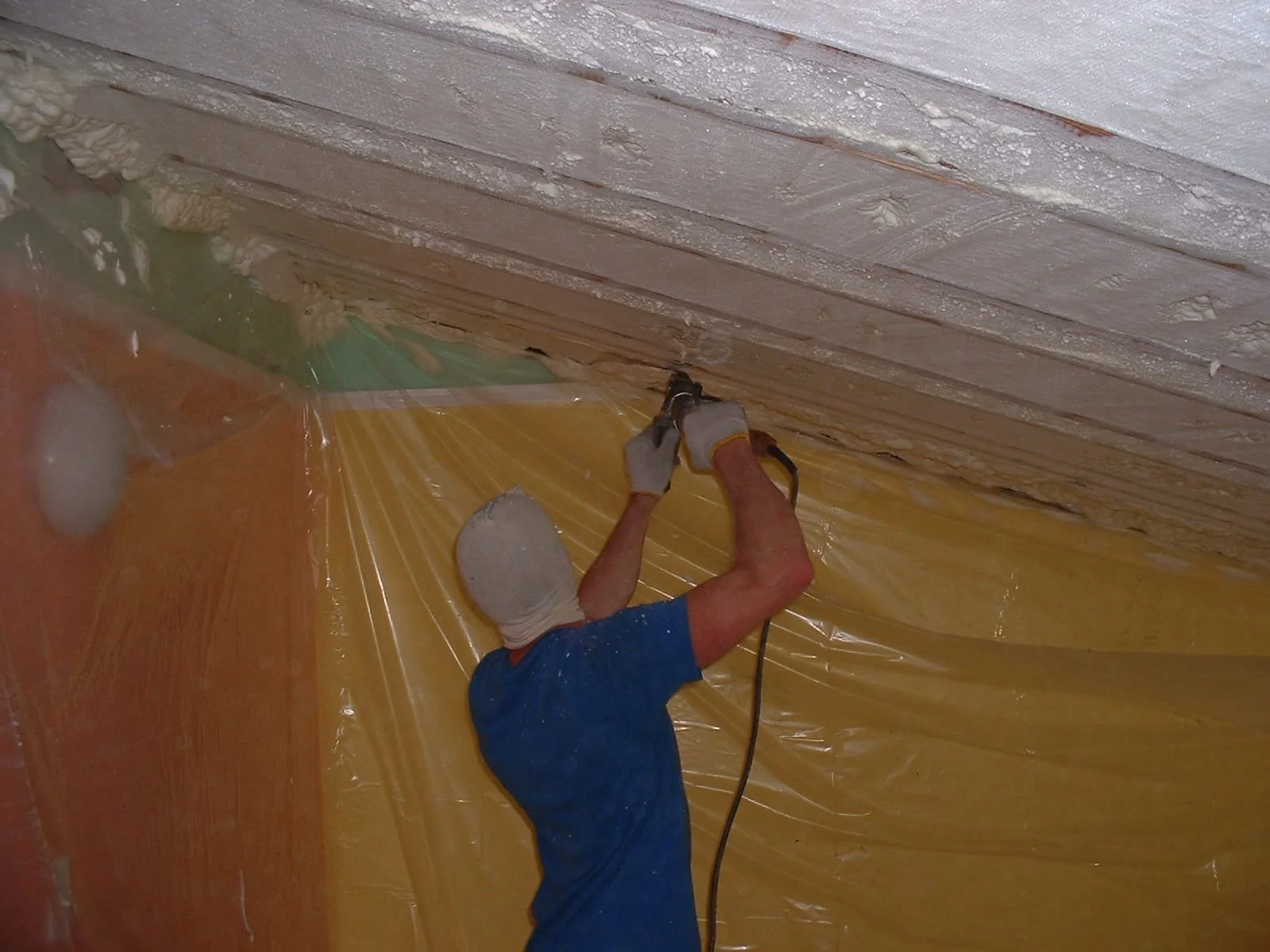Spray foam insulation is commonly used in buildings and homes to improve energy efficiency and provide air sealing. However, one question that often arises is: Is spray foam flammable? Let’s dive into the topic and understand the fire safety aspects of spray foam insulation.
Understanding Spray Foam
Spray foam insulation is made up of two main components – polyol resin and isocyanate. These two components are mixed together on-site using specialized equipment and applied as a liquid. Upon application, the liquid expands and forms a solid foam that fills gaps and seals air leaks effectively.

Credit: m.youtube.com
The Types of Spray Foam
When it comes to fire safety, it’s essential to differentiate between the two main types of spray foam insulation available:
- Open-cell spray foam: Open-cell spray foam is less dense and has a spongy texture. It has poor resistance to heat transfer but offers excellent sound absorption. Due to its composition, it is generally more flammable than closed-cell spray foam.
- Closed-cell spray foam: Closed-cell spray foam is denser and has a higher resistance to heat transfer. It provides better insulation properties and improved structural support. Closed-cell spray foam is typically less flammable than open-cell foam, but it is still important to consider its fire characteristics.
The Fire Safety of Spray Foam Insulation
Both open-cell and closed-cell spray foam can be flammable to some extent. However, it is important to understand that spray foam insulation is generally treated with fire retardants to enhance its fire resistance properties. These fire retardants help reduce its flammability and slow down the spread of fire.
Fire safety standards require spray foam insulation to pass specific tests to measure its fire performance. These tests evaluate the foam’s ignition resistance, flame spread, and smoke development. The performance of the foam is graded based on these parameters.
Factors Affecting Flammability
The flammability and fire resistance of spray foam insulation can depend on various factors, including:
- Quality of installation
- Thickness of the foam layer
- Proper sealing of gaps and joints
- Presence of additional fire retardant barriers
It is crucial to hire a professional installer who knows how to handle and install spray foam insulation safely, following relevant industry guidelines and best practices. Proper installation ensures that the foam provides the intended thermal insulation benefits while minimizing fire risks.

Credit: www.sprayonfoam.com
Best Practices for Fire Safety
To enhance fire safety when using spray foam insulation, consider the following best practices:
- Ensure the spray foam is covered with approved thermal barriers, such as drywall or intumescent coatings, to prevent direct exposure to flames and heat sources.
- Seal any electrical boxes or outlets with approved fire-resistant materials, maintaining the integrity of fire-rated assemblies.
- Regularly inspect the insulation for any signs of damage, such as gaps, cracks, or deterioration, and address them promptly.
- Keep sources of ignition away from the spray foam, such as open flames, smoking, or sparks.
- Have a functioning smoke alarm and fire suppression system installed in the building.
Frequently Asked Questions Of Is Spray Foam Flammable
Is Spray Foam Flammable?
Yes, spray foam can be flammable if it is not properly installed or if it comes into contact with an open flame.
How Can I Make Spray Foam Fire-resistant?
To make spray foam fire-resistant, it is important to choose a foam product that has been treated with fire-retardant chemicals during manufacturing.
What Are The Safety Precautions For Using Spray Foam?
When using spray foam, make sure to wear protective clothing, gloves, and goggles. Ensure proper ventilation and keep a fire extinguisher nearby.
Can Spray Foam Cause Allergic Reactions?
Yes, spray foam can cause allergic reactions in some individuals. It is advisable to consult with a professional if you have known allergies or sensitivities.
Conclusion
Spray foam insulation, both open-cell and closed-cell, can be flammable to some extent. However, with the use of fire retardants and proper installation techniques, the flammability is reduced, and the fire safety of spray foam insulation can be effectively managed. To ensure optimum fire resistance, it is important to follow best practices, including using approved thermal barriers, regular inspections, and keeping potential ignition sources away from the foam.

